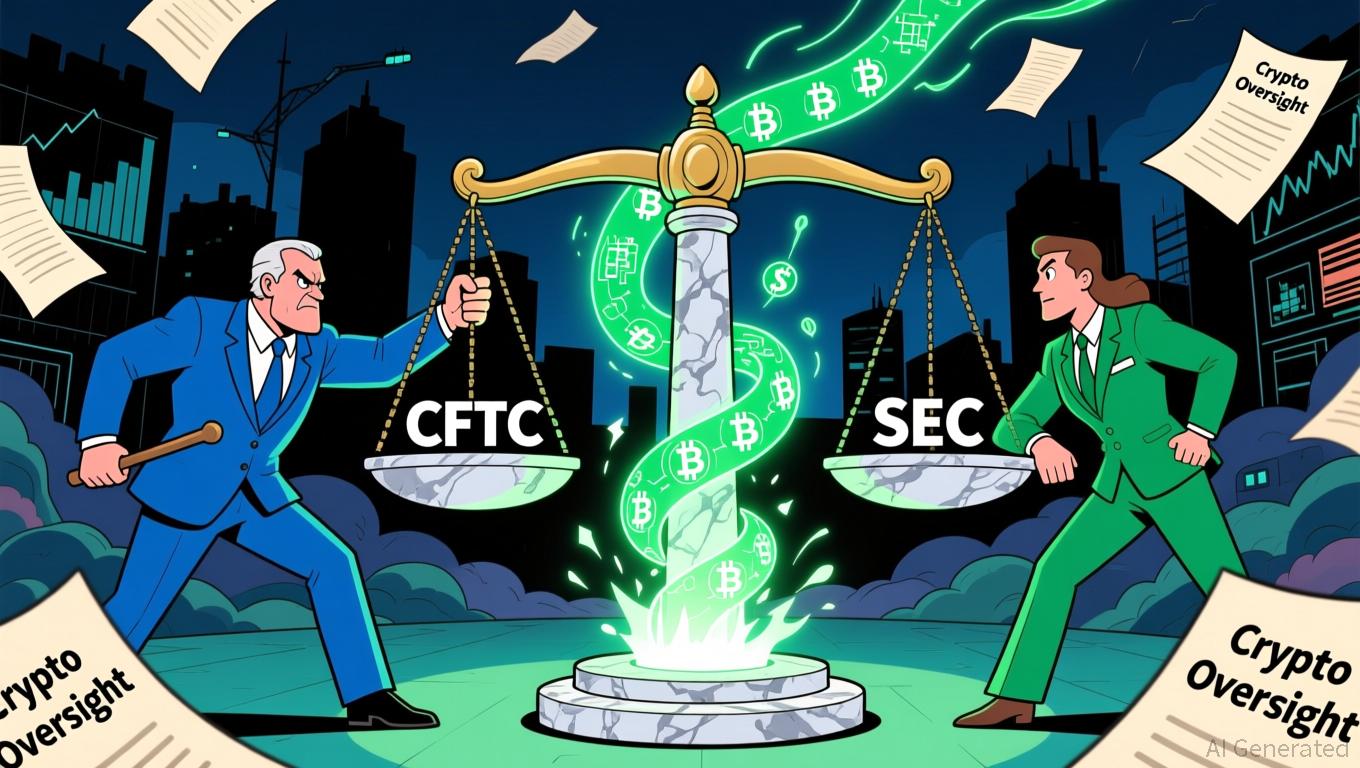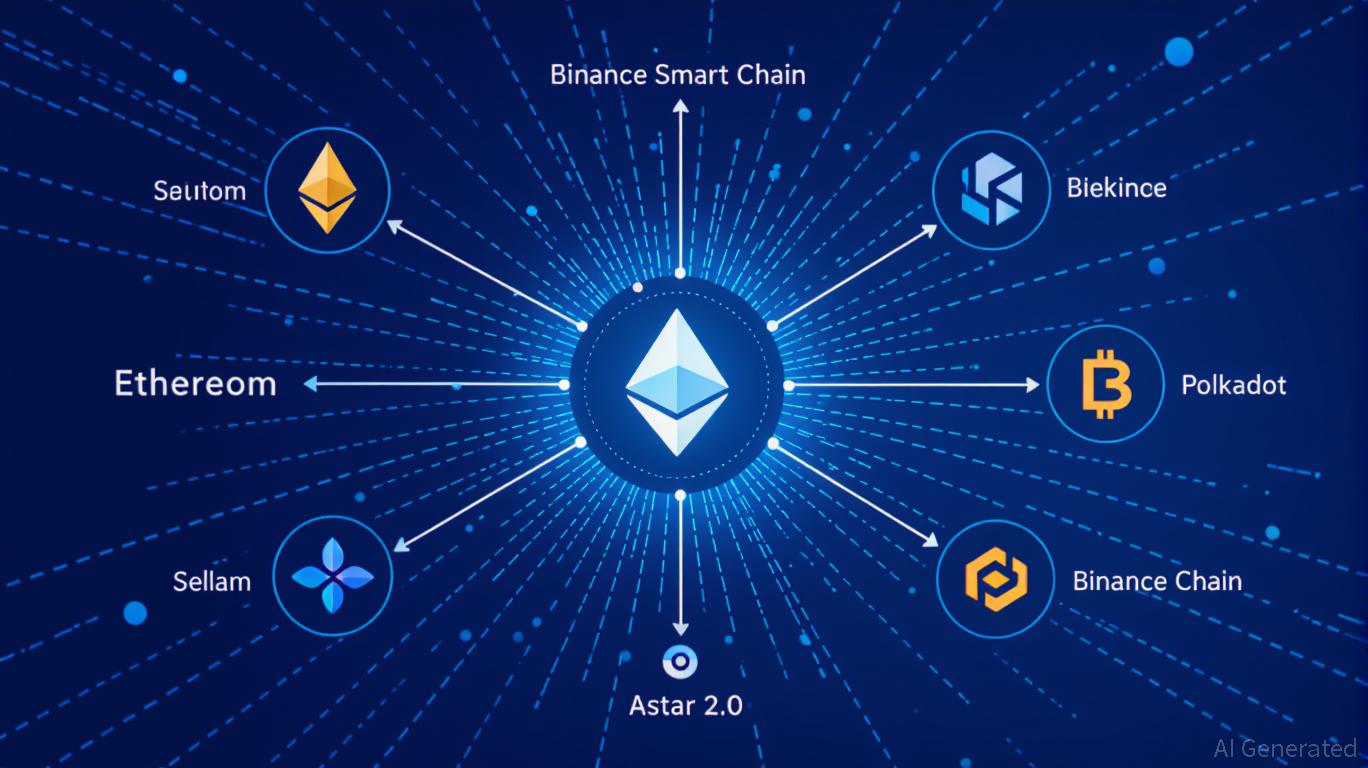EU Crypto Regulations Struggle to Balance Centralized Oversight with Regional Knowledge
- EU Commission proposes centralizing crypto oversight under ESMA, replacing MiCA's national regulator model and sparking industry concerns over legal uncertainty and implementation delays. - Critics warn centralized control risks destabilizing MiCA's 2026 rollout, with national regulators arguing they maintain closer firm engagement and ESMA requiring significant resource boosts. - France and ESMA Chair Verena Ross support centralization for regulatory consistency, but timing concerns persist as national
The European Commission is advocating for a major transformation in how cryptocurrencies are regulated across the EU, suggesting that the European Securities and Markets Authority (ESMA) should take on direct supervision of all crypto businesses within the union. This would move away from the current Markets in Crypto-Assets (MiCA) system, which relies on national regulatory bodies,
At present, MiCA requires crypto companies to obtain approval in one EU country, allowing them to operate throughout the bloc using a "passporting" mechanism. National authorities have spent years preparing for this approach, with the transition period ending in 2026.

Industry stakeholders have voiced significant concerns. Robert Kopitsch, secretary general of Blockchain for Europe,
This initiative is part of a broader push by EU lawmakers to unify oversight of financial markets, such as extending ESMA’s jurisdiction over clearing entities and trading platforms.
Nonetheless, critics argue that the timing of this proposal is problematic. National regulators are already dealing with the challenges of putting MiCA into practice, and transferring duties to ESMA might slow down approvals and make compliance more difficult for companies. In July 2025,
The proposal, which remains in draft status, still needs the backing of both the European Parliament and the Council of member states. If enacted, it could represent a significant change in how the EU manages financial regulation, aiming to balance centralized control with the need for local adaptability. For now, the discussion highlights the ongoing struggle between achieving regulatory efficiency and addressing the complex realities of a diverse and high-risk sector.
Disclaimer: The content of this article solely reflects the author's opinion and does not represent the platform in any capacity. This article is not intended to serve as a reference for making investment decisions.
You may also like
SEI Faces a Turning Point: Will It Be a Death Cross or a Golden Cross?
- SEI , Sei's native token, shows early recovery signs amid crypto market slump, with technical indicators suggesting potential breakout from prolonged consolidation. - Despite 2.83% 24-hour decline to $0.17, increased $114.1M trading volume and TD Sequential buy signals highlight critical inflection point potential. - Market analysis identifies $0.1756 support and $0.1776 resistance levels, with death cross risks below $0.1745 and golden cross potential above $0.1787. - Fear/greed index at 25 reflects ext

Bitcoin News Update: CFTC's Broader Role in Crypto Regulation Ignites Discussion on Clearer Rules
- U.S. lawmakers propose expanding CFTC's crypto oversight via a bill reclassifying spot trading, diverging from SEC's enforcement approach. - Harvard University invests $443M in BlackRock's IBIT ETF, reflecting institutional confidence in crypto as a legitimate asset class. - DeFi projects like Mutuum Finance raise $18.7M in presales, leveraging regulatory momentum and transparent on-chain credit systems. - RockToken's infrastructure-backed crypto contracts attract long-term investors with structured yiel

DASH Aster DEX's Latest On-Chain Growth and What It Means for DeFi Liquidity
- DASH Aster DEX leads 2025 DeFi shift with hybrid AMM-CEX model and multi-chain support (BNB, Ethereum , Solana), boosting TVL to $1.399B and Q3 daily trading volumes of $27.7B. - Platform's 1,650% ASTER token price surge post-TGE attracted 330,000 new wallets, with 94% of BSC-USD volume ($2B/day) driving institutional adoption via Binance/YZi partnerships. - ASTER token mechanics enable 80% margin trading, 5-7% staking rewards, and governance rights, while annual 5-7% fee burns create scarcity and align

Astar 2.0: Leading a New Generation of DeFi and Cross-Chain Advancements
- Astar 2.0 introduces a zkEVM mainnet and cross-chain interoperability, slashing gas fees and enabling 150,000 TPS with 2025 scalability goals. - Strategic partnerships with Mazda, Japan Airlines, and Sony demonstrate blockchain's real-world applications in logistics, loyalty programs, and digital asset tokenization. - Q3 2025 data shows $2.38M DeFi TVL growth and 20% active wallet increase, alongside a $3.16M institutional ASTR token acquisition. - The platform aims to solidify its role as a foundational
